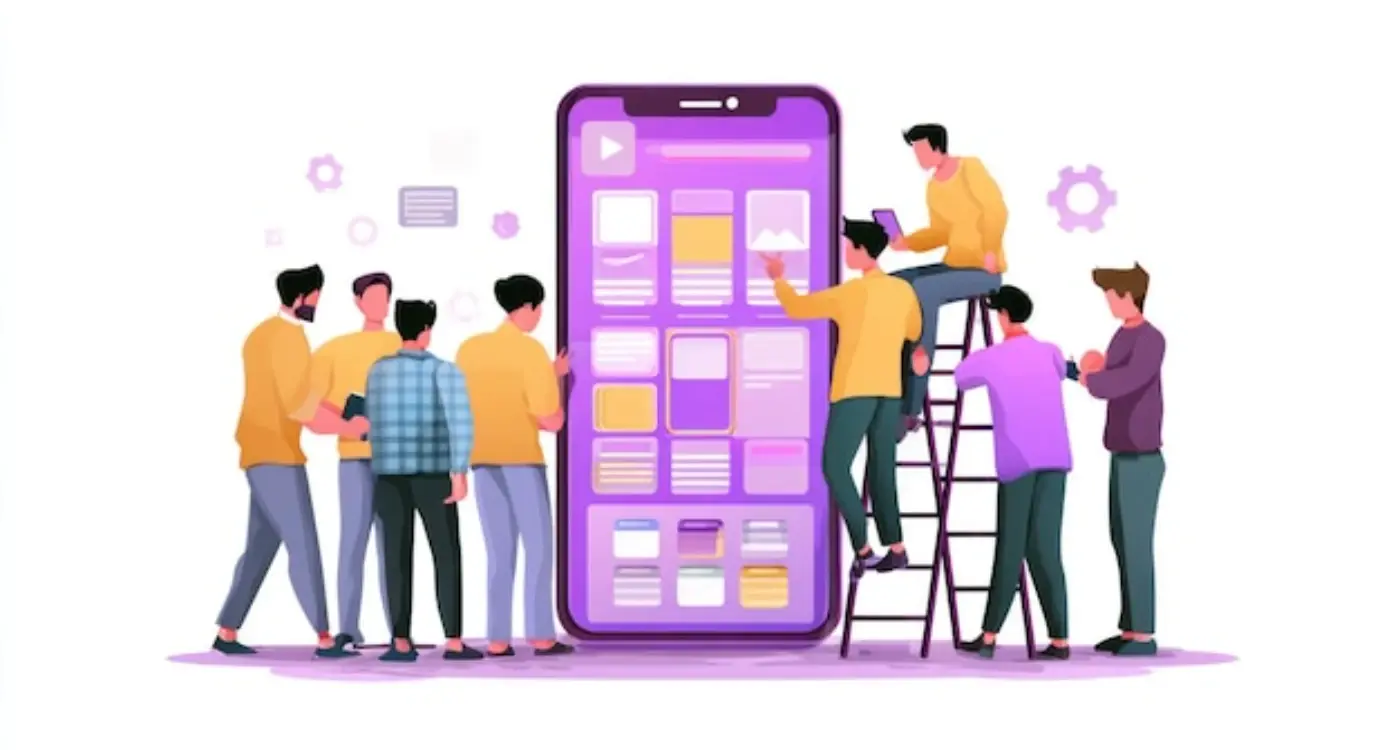How Do You Manage A Remote App Development Team Effectively?
Remote work has completely transformed how we build mobile app teams, with over 70% of development companies now operating distributed teams across multiple locations. What started as a necessity has become the preferred way of working for many agencies—and for good reason. Remote teams give you access to the best talent regardless of geography, reduce overhead costs, and often deliver better results when managed properly.
The challenge isn't whether remote app development works (it absolutely does), but how to make it work brilliantly. Poor team coordination can turn a promising mobile app project into a nightmare of missed deadlines, communication breakdowns, and frustrated developers. I've watched talented teams fall apart simply because nobody established clear processes for project oversight from day one.
The most successful remote app development teams aren't the ones with the best developers—they're the ones with the best systems
This guide will walk you through everything you need to know about managing a remote mobile app development team effectively. From setting up your team structure to handling time zones, quality control, and building genuine team culture across distances. Whether you're transitioning from an in-house team or building your first remote development squad, these strategies will help you avoid the common pitfalls and create a team that delivers exceptional results consistently.
Setting Up Your Remote Team Structure
Getting your remote app development team structure right from the start can save you months of headaches down the line. I've worked with remote teams for years and the ones that succeed all have one thing in common—they know exactly who does what and when they do it.
The biggest mistake I see companies make is trying to replicate their office structure online. Remote work is different; it needs its own approach. Start by identifying your core roles and responsibilities, then build your team around these key positions.
Core Team Roles You Need
- Project Manager—keeps everyone on track and handles client communication
- Lead Developer—makes technical decisions and reviews code
- UI/UX Designer—creates the user experience and visual design
- Quality Assurance Tester—finds bugs before your users do
- DevOps Engineer—manages deployment and infrastructure
Don't try to hire everyone at once. Build your team gradually as your projects grow. A small, well-organised team of three people will always outperform a chaotic group of ten.
Setting Clear Boundaries
Each team member needs to understand their exact responsibilities—not just what they do, but what they don't do. Write these down and share them with everyone. When someone knows their lane, they can focus on doing great work instead of wondering if they should be doing something else.
Communication Tools and Daily Check-ins
After managing remote mobile app development teams for the better part of a decade, I can tell you that picking the right communication tools isn't just about finding the shiniest platform—it's about creating a system that actually works for your team. Slack remains my go-to for instant messaging because it keeps conversations organised in channels; you can have separate spaces for iOS development, Android updates, and general chat without everything getting mixed up.
Daily check-ins are where the magic happens for mobile app team coordination. I schedule 15-minute video calls every morning where each developer shares what they completed yesterday, what they're working on today, and any blockers they're facing. This approach keeps everyone aligned without eating into productive coding time. For project oversight, I use tools like Zoom for video calls and Notion for shared documentation—but honestly, the specific tools matter less than consistency.
Keep daily check-ins short and focused. If a discussion needs more than 5 minutes, schedule a separate call with just the relevant team members.
The key is establishing a rhythm that works across time zones. I've found that asynchronous updates through written status reports work brilliantly when your team spans multiple continents. Your mobile app project will benefit from clear communication channels that don't rely on everyone being online simultaneously.
Project Planning and Task Management
Getting your project planning right is what separates successful remote app development teams from the ones that struggle. I've seen too many projects fall apart because nobody knew who was doing what or when things needed to be done—and trust me, it's painful to watch!
The secret is breaking everything down into bite-sized chunks that your team can actually manage. Start with your main app features and split them into smaller tasks that take no more than a day or two to complete. This way, people can tick things off regularly and feel like they're making progress.
Choose the Right Tools
You'll need a proper project management tool that everyone can access. Jira works well for technical teams, whilst Trello is great if you want something simpler. The key is picking one system and sticking with it—don't let your team scatter across different platforms.
Keep Everyone in the Loop
Remote teams need clear deadlines and regular updates. Set up automatic notifications so people know when tasks are due, and make sure everyone can see what their teammates are working on. This transparency stops work from overlapping and helps people plan their time better. Weekly planning sessions where you review what's coming up next week keep everyone aligned and spot potential problems before they become disasters.
Building Trust and Team Culture
Trust is the foundation of any successful remote mobile app development team—without it, project oversight becomes nearly impossible and team coordination falls apart. I've seen brilliant developers become unproductive simply because they didn't feel trusted to do their work without constant supervision. The key is giving your team autonomy while maintaining clear expectations and regular check-ins.
Start by being transparent about project goals, timelines, and challenges. When team members understand the bigger picture of your mobile app development, they're more likely to take ownership of their work. Share both successes and setbacks openly; this creates an environment where people feel comfortable admitting mistakes before they become major problems.
Creating Connection Across Distances
Remote teams miss out on casual office conversations, so you need to create opportunities for informal interaction. Weekly virtual coffee chats or team gaming sessions help people connect as humans, not just colleagues working on the same mobile app project.
The best remote teams I've worked with treated each other like family members living in different cities—they cared about each other's wellbeing beyond just work deliverables
Celebrate wins together and support team members during difficult periods. When someone solves a tricky coding problem or receives positive user feedback, make sure the whole team knows about it. This builds a culture where everyone feels valued and motivated to contribute their best work.
Handling Time Zones and Scheduling
Time zones are probably the trickiest part of managing a remote app development team—I won't sugarcoat it. You've got developers in different countries, designers waking up when your project manager is heading to bed, and clients who expect instant responses regardless of what time it is where your team actually lives.
The secret isn't trying to make everyone work the same hours (that's a recipe for burnout); it's about finding those sweet spots where your team's schedules overlap. Most successful remote teams aim for about 3-4 hours of overlap each day where everyone can jump on calls, discuss blockers, and make quick decisions.
Making Scheduling Work for Everyone
Start by mapping out where your team members are located and their preferred working hours. Some developers are night owls, others are early birds—work with their natural rhythms rather than against them. I've found that rotating meeting times works well; if Monday's standup is at 9am GMT, maybe Thursday's is at 2pm GMT so different team members aren't always the ones staying late or getting up early.
Tools That Actually Help
World clock apps are your best friend here. Tools like World Clock Pro or even just multiple clocks on your phone can save you from that awkward moment when you schedule a call at 3am someone's time. Here are the development tools that actually make a difference:
- Calendly with timezone detection for client meetings
- Slack's timezone indicators next to team members' names
- Async video updates using Loom when live meetings aren't possible
- Shared Google Calendar showing everyone's working hours
The key is being flexible and respectful of everyone's time. Yes, sometimes someone will need to take a call outside normal hours, but make sure it's not always the same person making that sacrifice.
Quality Control and Code Reviews
I'll be honest with you—managing code quality with a remote mobile app team can feel like trying to herd cats sometimes. You can't just pop over to someone's desk to check their work or have a quick chat about that dodgy bit of code you spotted. But here's the thing: remote teams often produce better quality code than office-based ones, and I've seen this time and time again over my years in the business.
The secret lies in creating proper systems that work for everyone, regardless of where they're sitting. Your team coordination depends on having clear processes that everyone follows religiously—no exceptions, no shortcuts.
Setting Up Your Review Process
Every piece of code that goes into your mobile app needs to be reviewed by at least one other developer before it gets merged. This isn't about trust; it's about catching mistakes before they become expensive problems. Pull requests should include detailed descriptions of what changed and why, making project oversight much easier for everyone involved.
Set up automated testing that runs before any code review begins. This catches basic errors and lets your reviewers focus on the important stuff—logic, performance, and user experience.
Making Reviews Work Across Time Zones
Time zones can actually work in your favour here. While your London developer sleeps, your team in another timezone can review their code and leave feedback. By morning, there's already a conversation started. The key is having clear guidelines about what needs reviewing and how long people have to respond.
| Review Type | Response Time | Who Reviews |
|---|---|---|
| Bug fixes | 4 hours | Senior developer |
| New features | 24 hours | Two team members |
| Security changes | 48 hours | Security specialist |
Remember that code reviews aren't just about finding problems—they're about knowledge sharing and keeping your whole team up to speed with how the mobile app is evolving.
Troubleshooting Common Remote Team Problems
After years of managing remote app development teams, I can tell you that problems will pop up—it's just part of the process. The good news is that most issues follow predictable patterns, and once you know what to look for, you can sort them out quickly.
Communication Breakdowns
The biggest headache you'll face is when team members stop talking properly. Maybe your iOS developer thinks the backend is ready when it's not, or your designer creates something that can't actually be built. When this happens, don't panic. Call an immediate team meeting and get everyone on the same page; sometimes a quick screen share session can clear up weeks of confusion.
Productivity Issues
Some team members might struggle with distractions at home or feel disconnected from the project. If you notice someone's output dropping, have a private chat first—there might be personal issues affecting their work. Often, adjusting their schedule or pairing them with another team member can get things back on track.
- Set up regular one-on-one check-ins to catch problems early
- Create clear escalation paths for technical blockers
- Use shared documentation to prevent information silos
- Establish backup plans for when key team members are unavailable
Remember, remote teams need more structure than office-based ones. What feels like micromanaging in person often becomes necessary guidance when working remotely. Learning from successful development companies can help you identify what practices work best for your team.
Conclusion
Managing a remote mobile app development team isn't rocket science, but it does require a different approach than traditional office-based work. I've watched countless teams succeed—and fail—at remote collaboration over the years, and the difference usually comes down to how well they handle the basics: clear communication, structured processes, and genuine team coordination.
The tools and techniques we've covered throughout this guide work because they address the real challenges remote teams face. You can't just wing it with project oversight when your developers are scattered across different time zones; you need systems that keep everyone aligned and accountable. Whether it's your daily standups, code review processes, or the way you handle project planning, consistency beats perfection every time.
Building a successful remote team takes patience and plenty of trial and error. What works for one team might not work for another, and that's perfectly normal. The key is to start with solid foundations—good communication tools, clear processes, and a culture that values transparency—then adapt as you learn what works best for your specific team and projects.
Remote work isn't going anywhere, and neither are the opportunities it creates for building brilliant mobile apps with talented people from around the world. Get the fundamentals right, and you'll be amazed at what your team can achieve together, even when you're miles apart.
Share this
Subscribe To Our Learning Centre
You May Also Like
These Related Guides

What Are the Best Practices for Managing Remote App Development Teams?

What Strategies Work Best for Managing App Development Teams?



